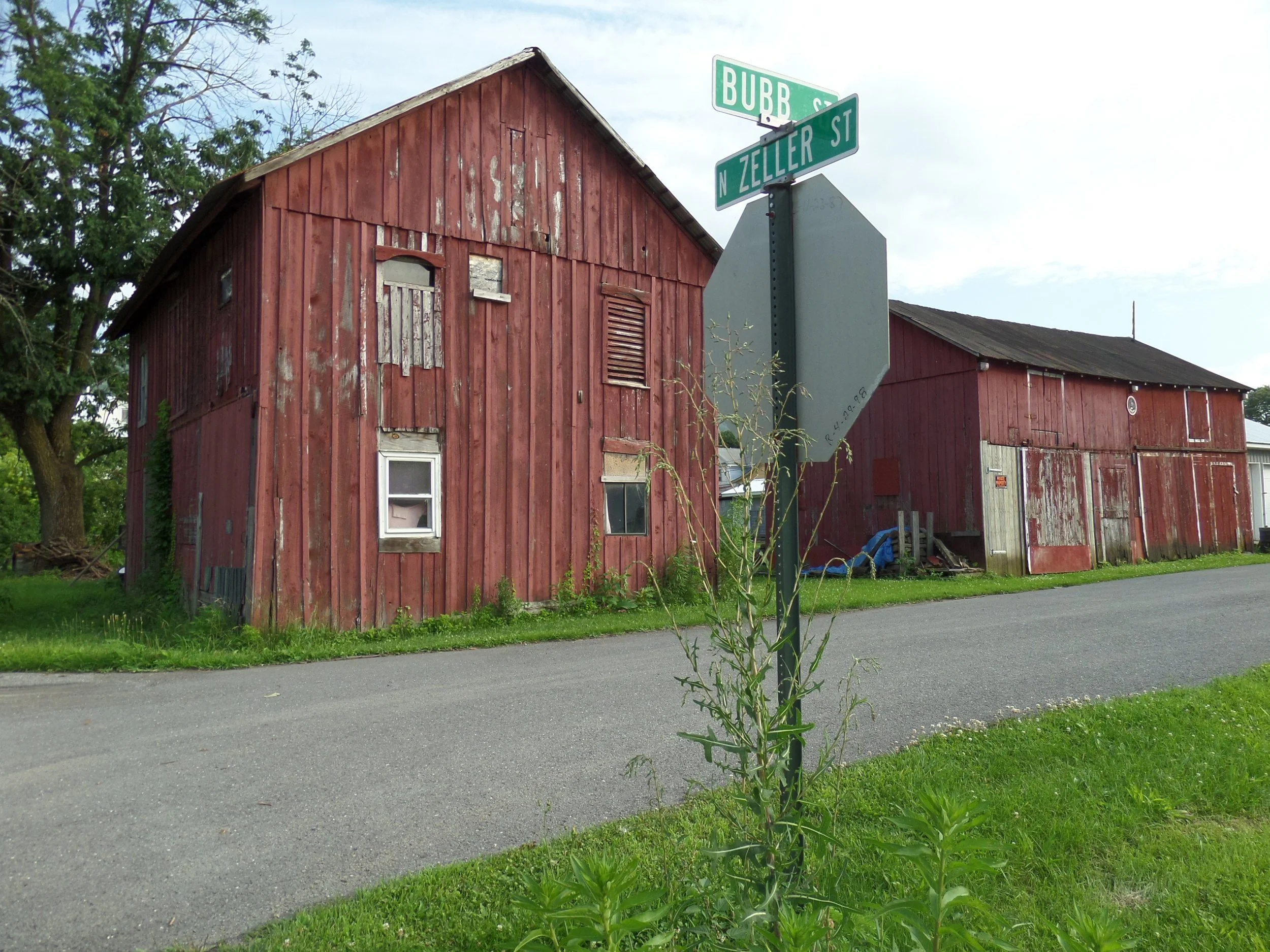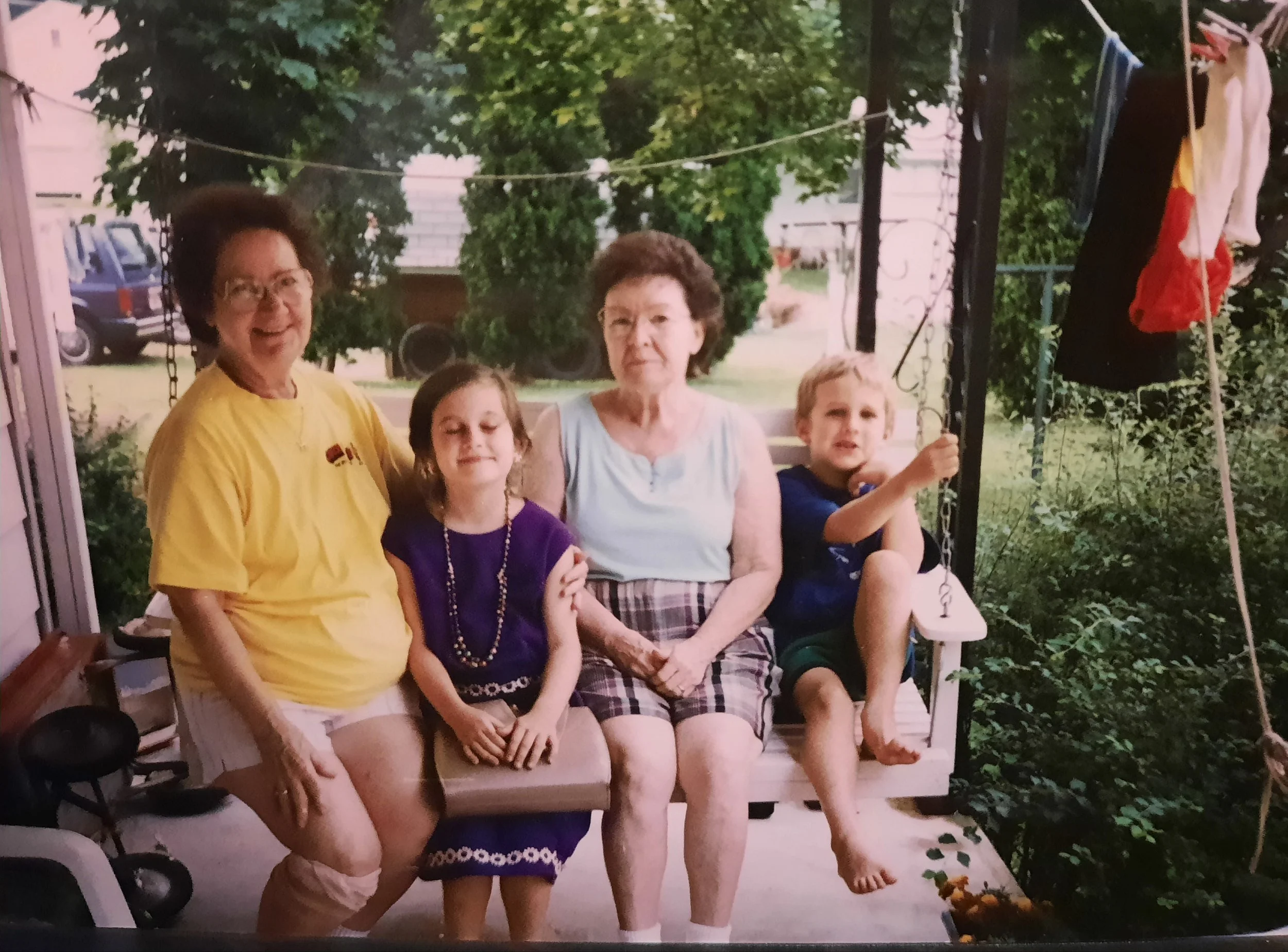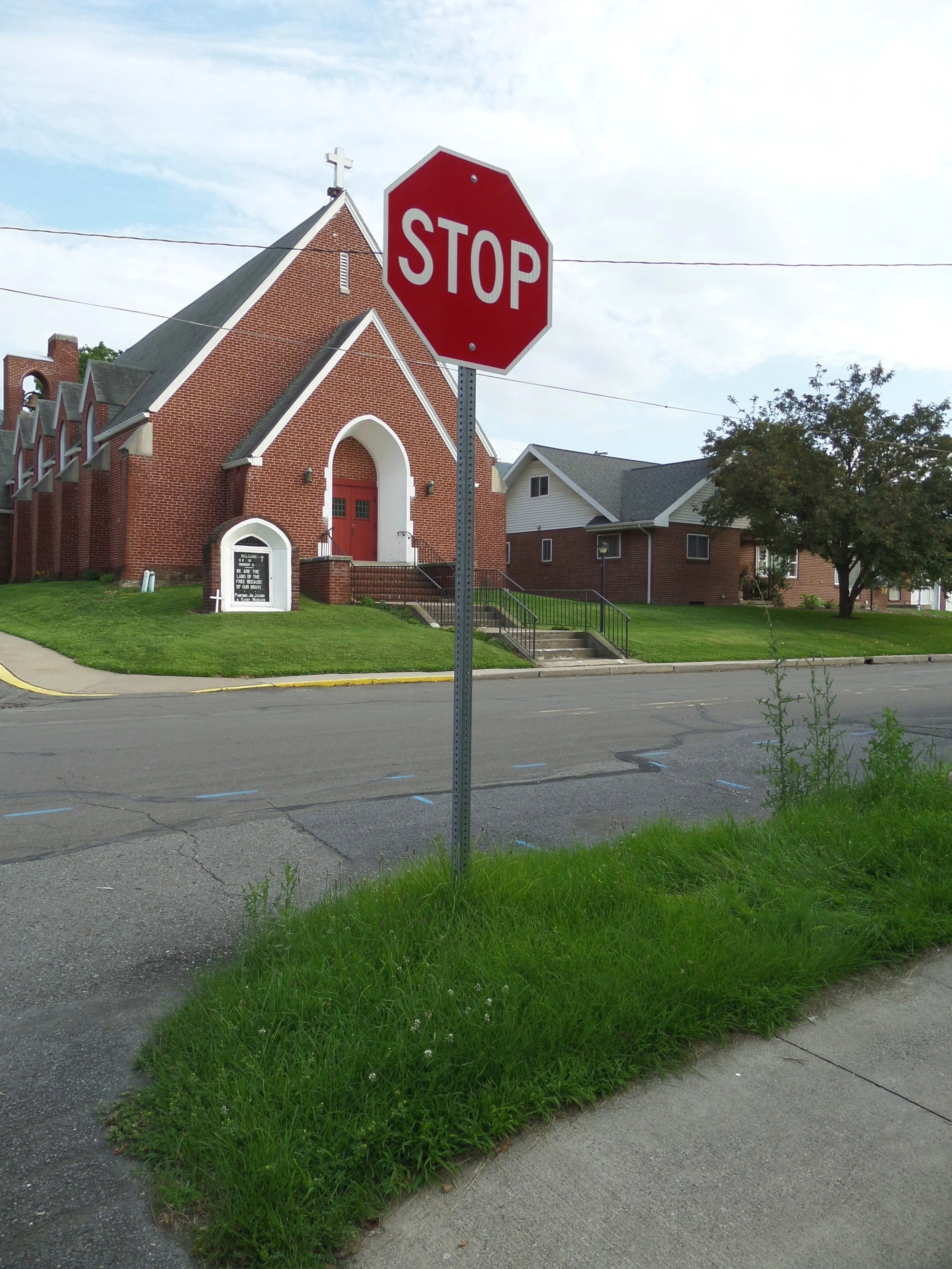Something More Than Merely Quaint: The Beautiful Stillness of Snyder County, Pennsylvania
The borough of McClure in Snyder County, Pennsylvania
There are two billboards on the drive between McClure and Lewistown, Pennsylvania, and both of them contain recruitment ads for the Marines.
Aside from these billboards, you will find panel-sided houses set back behind clusters of skinny evergreens or cornfields, double-wide trailers with porches crumbling around the frames, large barns overflowing with farming equipment, a couple of Dollar General stores, shallow streams that snake along the valley.
The population of McClure, Pennsylvania has been in slow decline for decades, reaching its peak of around 1,000 residents in the 1970s. Its neighboring community of Beaver Springs is slightly smaller still. The whole of Snyder County contains no more than 40,000 residents, including many Amish and Mennonite communities, whose presence only amplifies the feeling that time sits in a strange stasis here—the kind of stasis that still allows for wear and erosion, but not for renewal and growth.
Snyder County was first settled by European immigrants in the early 1700s—and my ancestors have been its constant inhabitants from the very beginning.
My third-great grandparents with their children and grandchildren (my great-great grandmother is at the far left; my great grandmother is bottom left) in Snyder County, sometime between 1900 and 1910
The big annual event in McClure is the Bean Soup Festival and Fair (referred to colloquially as the ‘Bean Soup’), which began in 1883 as a meet-up of Civil War veterans and officially became a public celebration in 1891. That 1891 event was organized by the son of my fifth-great-grandfather (brother of my fourth-great-grandmother); one of my third-great-grandfathers, who served as a cook during the war, prepared the first official bean soup (a recipe comprising only beef, beans, and water).
My great-great grandfather (a Civil War veteran) with his daughter (my great-great aunt) and her husband in McClure
On Ohio Street in McClure, my great-grandparents’ home still stands, although time and poor upkeep have left it looking ruinous. Next to it is the home my grandmother lived in with her first husband; a few blocks away, the home where her brother, my great-uncle, and his wife lived in their later years (they spent their younger days living in an apartment above the town bank). Down on Specht Street is the home that was occupied by my grandmother for over 60 years, until recently (when she moved into a care home in Lewistown). It is the home where my mother grew up, where I spent countless childhood summers, and even occasional autumns and Christmases.
My childhood is filled with memories of McClure: catching lightning bugs in mason jars in my grandmother’s front yard. Wading around in the shallows of the creek that flowed past the neighbor’s house. Wandering up to the playground at the local school (since closed and converted into god-knows-what), then back into the woods. Squatting on the curbside as the Fourth of July parade marched through town, reaching for candy strewn across the pavement. Dipping my toes into the ice-cold waters of the Veterans Memorial Pool. Watching from the front porch as horse-led Amish buggies bounded down the road.
McClure’s Veterans Memorial Pool, which was completed in 1950 and is still open to the public
But even as a child, I noticed a peculiar sense of claustrophobia that would set in there after about a week. Perhaps it was the feeling of being cast low in a valley, encased by the surrounding mountains; perhaps it was the restlessness that comes with being an overstimulated suburban kid thrust into a quieter, more rural setting.
Whatever it was, it felt like sinking into thick mud—like this gnawing sense that the longer you stood still, the harder you’d stay stuck.
Inertia is something I’ve always struggled against: the feeling of stagnation, of sitting too still, is enough to lead me to impulsiveness. (A lesson I have learned through various ill-advised life decisions.)
This is especially true when I travel: I’m constantly in motion, even if that motion is little more than aimless wandering. As long as I’m moving—whether with purpose or in a directionless, meandering fashion—I’m happy.
It’s something I’m working on—being content with stillness. There are specific places in the world that have helped me to better appreciate the joys of doing nothing. Laos is one of them.
Snyder County, Pennsylvania is another.
On the outskirts of the boroughs and townships of Snyder County, you’ll find beautiful, rolling hills and picturesque farms—some of which are home to the local Amish and Mennonite communities
Recently, I traveled to the US on a two-week business trip—a whirlwind excursion that included stops in every corner of the country. It would have been exhausting under any circumstances, but to make matters worse, I started feeling sick around the third day of the trip, getting progressively worse along the way. Each morning I would wake up before dawn, feverish, coughing, aching, sniffling. I’d take an assortment of medications, make a cup of coffee, run myself a hot bath in my hotel room, and try to sweat out the fever before starting a busy day of work engagements.
Even after taking a couple days in the middle of the trip to hibernate in a hotel room in San Francisco, I could not recover.
Recovering from illness requires stillness, both mental and physical, and I couldn’t manage to get enough of it to feel better.
But my work trip eventually wrapped up in Washington, DC, and from there, I parted ways with my colleagues and grabbed a train to Philadelphia, where I met up with my parents and we drove to visit relatives—first, to my father’s neck of the woods in the Berwick/Nescopeck area and, finally, to Snyder County, where my mother grew up.
(Clarification: actually, our first stop in Pennsylvania was the Reading Terminal Market, because visiting Philadelphia without grabbing a roast pork and broccoli rabe sandwich from DiNic’s is an actual crime.)
Modern life has a way of twisting us up, like sitting on a swing and turning round and round until you’re wound so tight that you’re no longer useful or functional in any practical sense. Places like Snyder County—like Luang Prabang, Laos; like the town of Maria Alm in the Austrian Alps; like a friend’s farm in the Atlas Mountains of Morocco—are where I go to unravel. And as anyone who’s ever played on a swing set will tell you, the best way to unravel yourself is simple: just sit still.
Sitting on my grandmother’s porch as a child (wearing some of her old things that I most definitely pulled from the attic)
I spent the week doing little more than sitting on porches and around kitchen tables. I visited with family; I watched chickens peck around neighboring yards; I indulged (rather heavily) in some legal recreation I had acquired on my way out of DC; I read. Both physically and mentally, I went into a sort of hibernation.
I read Joan Didion’s South and West, and marveled at how her descriptions of the American south, circa 1970, echoed my reflections on modern-day rural Pennsylvania. I became overwhelmed by a desire to watch Grey Gardens. I read My Year of Rest and Relaxation, and imagined how wonderful it would feel to continue my hibernation for months and months, but then remembered the year when I did, more or less, hide away from the world in a semi-slumber, and how it did not make me feel great. But this would be different, I told myself; it would be a conscious choice—a deliberate unraveling.
You see, this is not a travel story, exactly: no one just ‘travels’ to Snyder County, Pennsylvania. If you want to gawk at the Amish, you go to Lancaster County; if you want to escape to some rural getaway, there are a million more destinations better suited to your purpose. There are no hotels or guesthouses in McClure or Beaver Springs. When I named this blog ‘Don’t Follow Me,’ it was with this kind of place in mind: the kind I want to tell you about but can’t necessarily instruct or encourage you to experience.
The local Methodist church in McClure
McClure is not a place that is accustomed to visitors: I once had a friend take the train from NYC to Lewistown so that she could stay with me at my grandmother’s house for a few days. One day, as we strolled aimlessly through town (one of a limited set of activities and recreations available to visitors), two children emerged from a deep-set porch and wandered down the front steps of their house. They looked at my friend, then shouted out inquisitively, “Who are you?”
It was a genuine sense of curiosity, and a telling reflection of just how few ‘outsiders’ ever pass through.
While I, too, am something of an outsider there, my presence can be contextualized, at least. When I was young, people would stroll out of their houses to greet me: “You’re Mary Jo’s daughter!” “You’re Helen’s granddaughter!”
As a traveler, your dining options, too, would be rather limited in a place like Snyder County: there are few restaurants. Food trends and preferences have not changed for decades, and you will still find dishes like fried haddock, Pennsylvania-style chicken and waffles (the chicken is shredded, not deep-fried like in the south, and it’s smothered in brown gravy instead of maple syrup), and ham pot pie just about everywhere. People still make ambrosia salads and shoofly pies (a Pennsylvania Dutch classic) for dessert, and you can still find little markets serving up hoagies and milkshakes.
Full disclosure: this particular hoagie hut is not in Snyder County (it’s in Bloomsburg, in Columbia County), but it serves up a top-notch hoagie, if I may say so myself
There’s a phrase I once wrote in a poem that often gets stuck in my head like mantra: “something more than merely quaint.”
“… It is something more than merely quaint / Like those small birds that build elaborate nests on the forest floor / Or those apes who fashion pieces of grass behind their ears.”
“Something more than merely quaint” is what runs through my head when I find something charming or endearing or cute, but I also recognize that there is depth and meaning behind it—a significance that I can’t quite put my finger on.
It is what runs through my head when I see porches caving under the weight of clutter and accumulation. It is what runs through my head when I see panel-sided homes with small American flags sticking out of the lawn, elderly residents parked in rocking chairs, children running barefoot down cracked and uneven sidewalks. It is what runs through my head when the waitress in a restaurant knows every patron but me and can predict their order before they even sit down. It is what runs through my head when a child dressed in Amish-style overalls glances out from the seat of a horse-drawn buggy.
The charm of small-town America is fully on display in McClure: it is something more than merely quaint
It is what runs through my head when I see “Apply Within” scrawled on paper and taped up against the window of every business in town—and then again, when these handmade signs inevitably make my mind flash back to those Marine billboards on the road to Lewistown.
There is a reason that we ought to treat stillness as a temporary condition—that we cannot meditate and hibernate our lives away, that we cannot endure stasis for too prolonged a time.
The longer you stand still, the harder you stay stuck.










